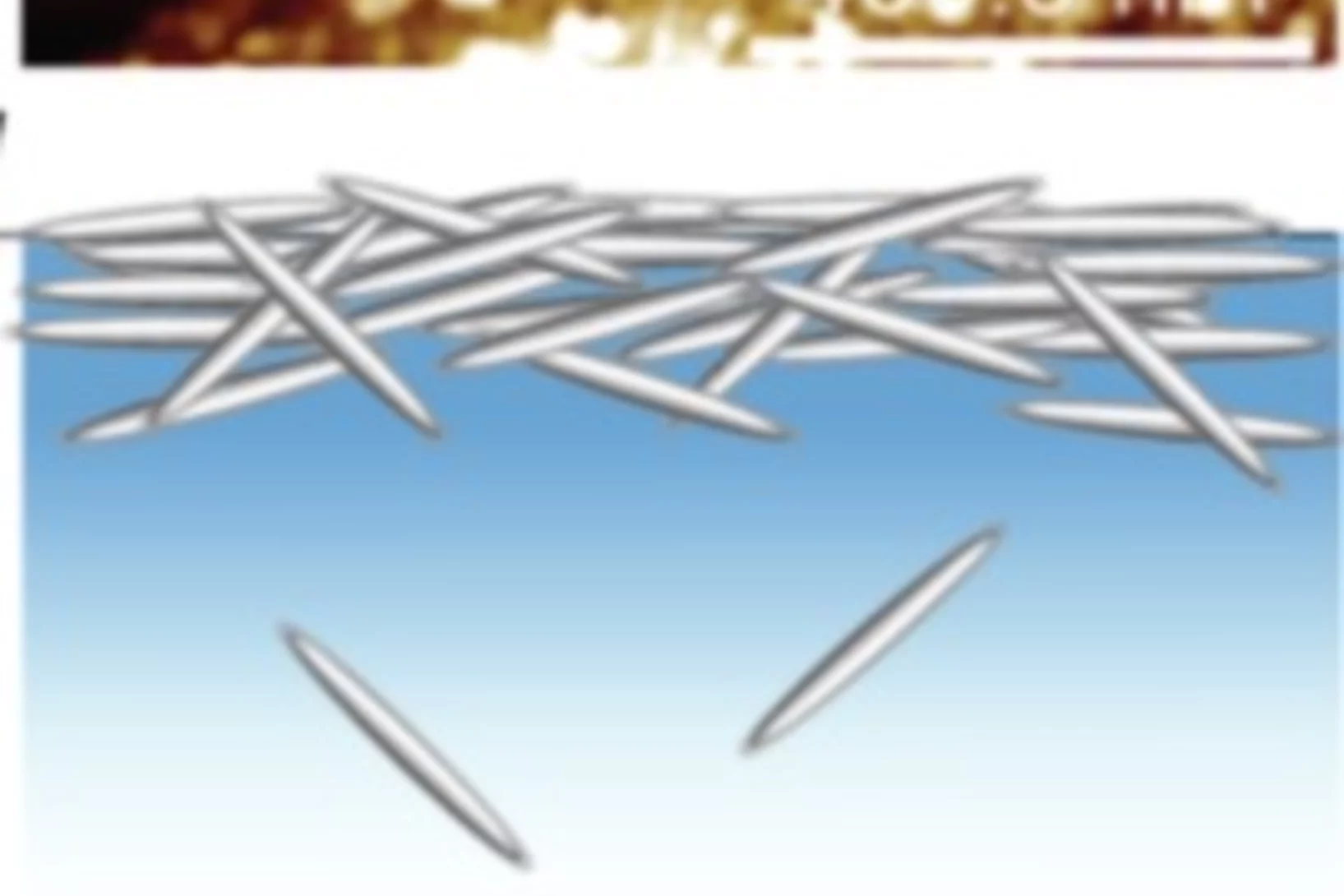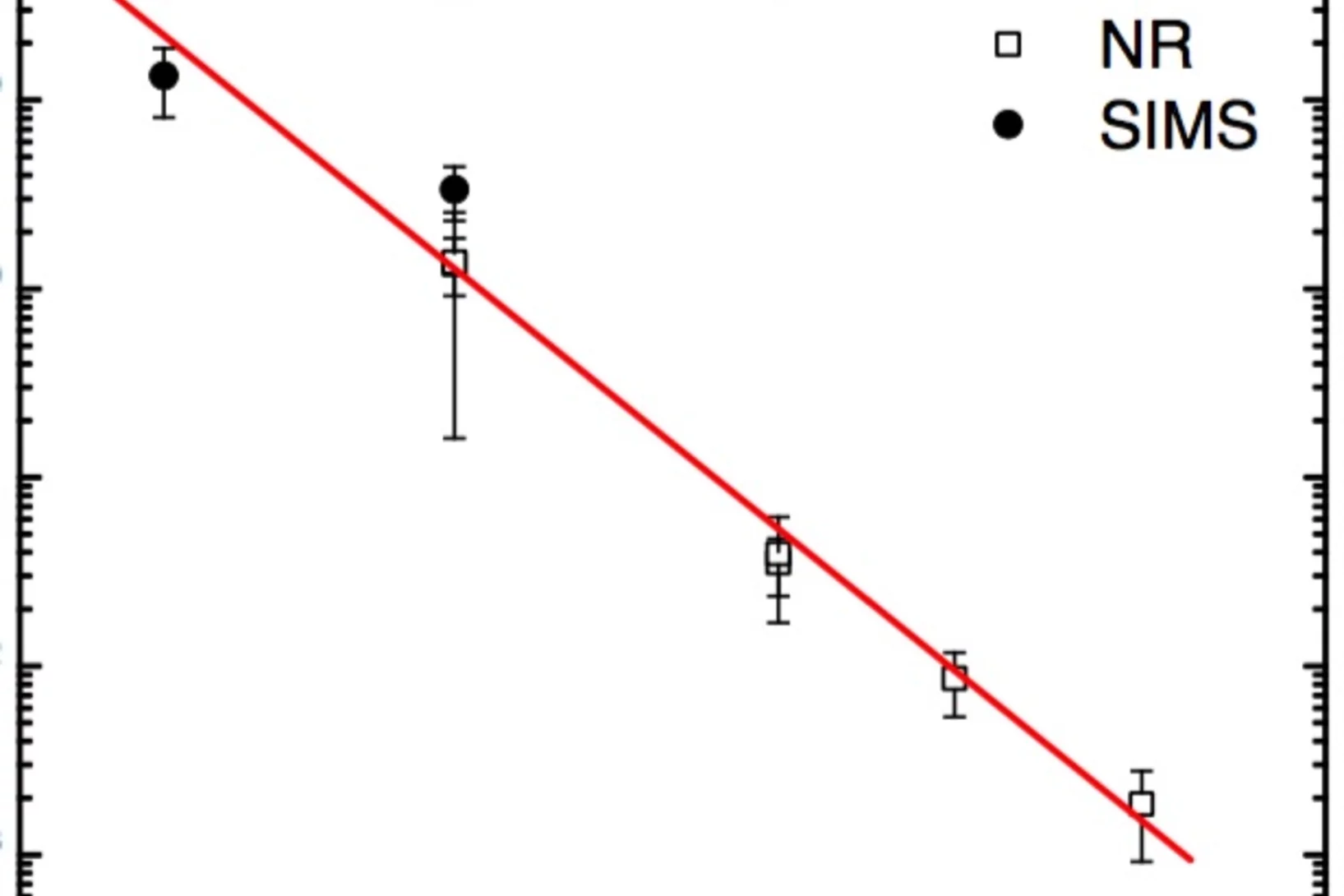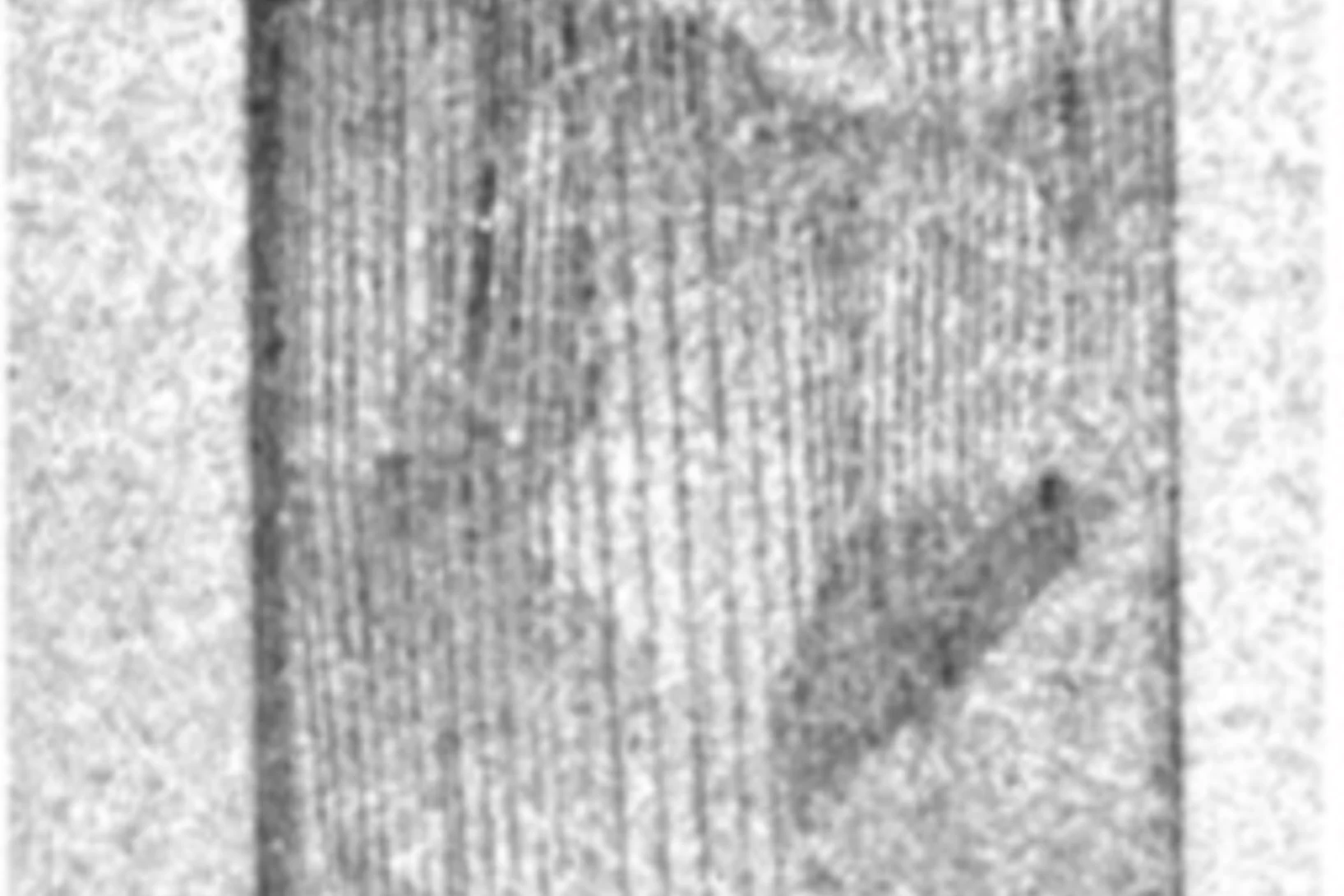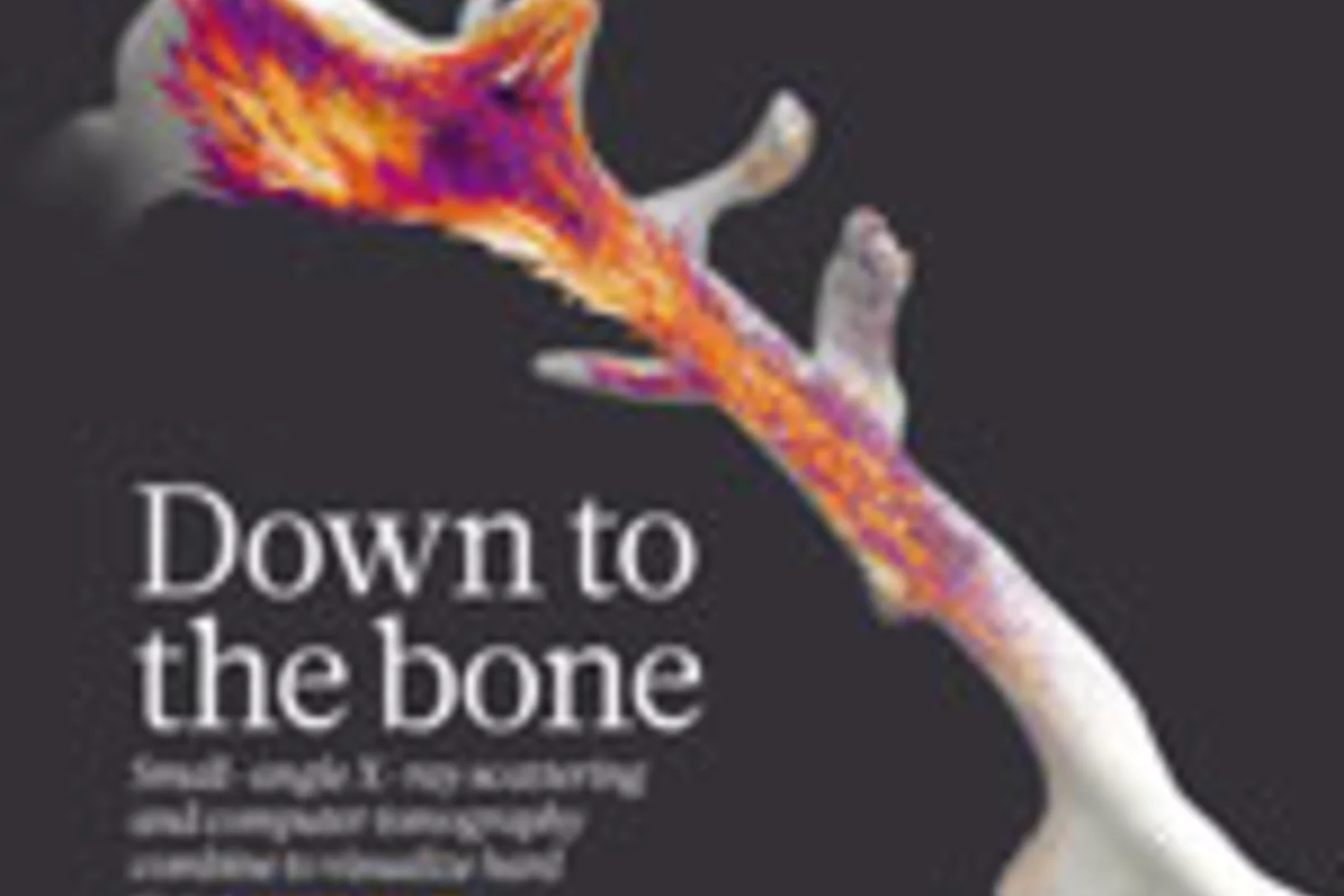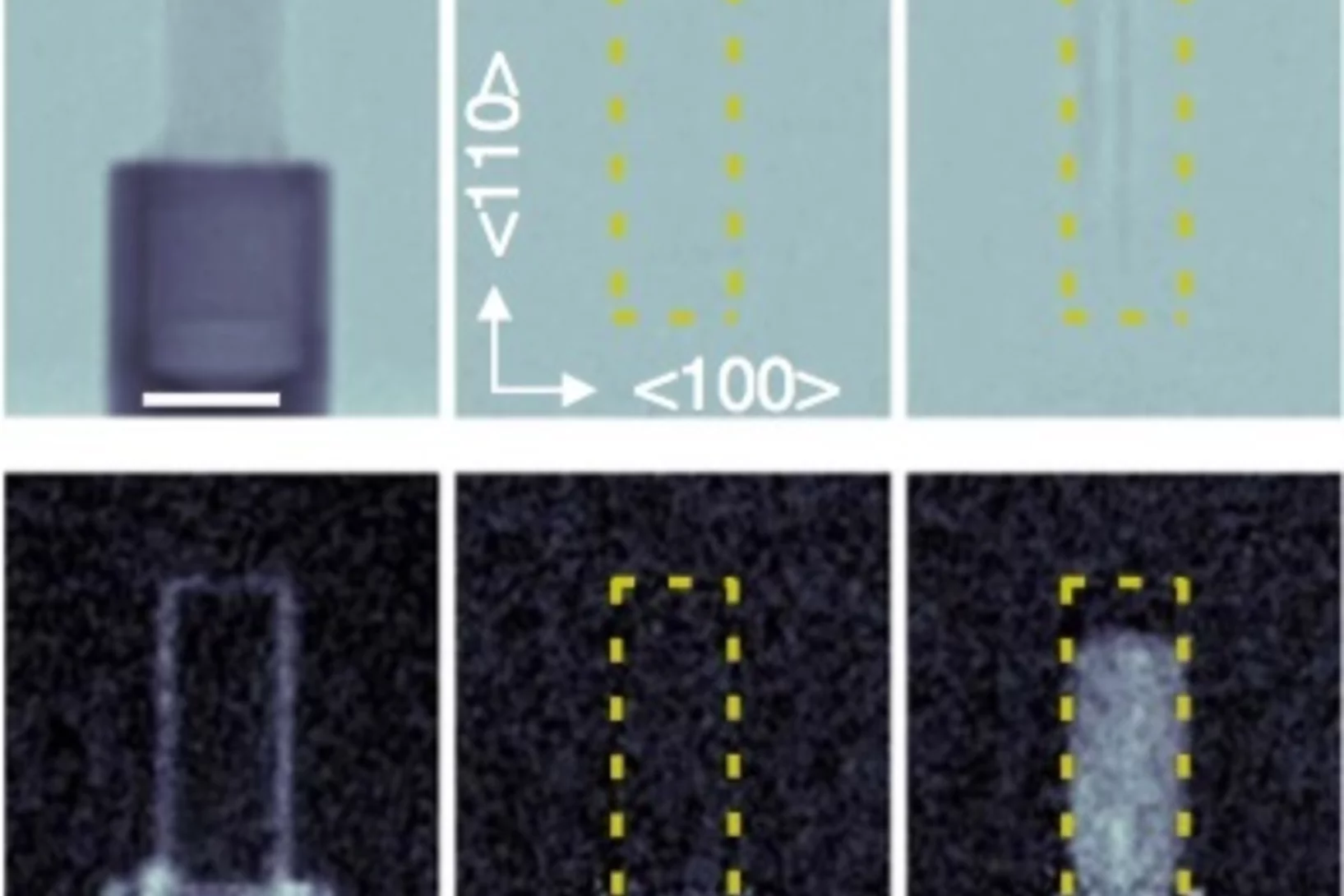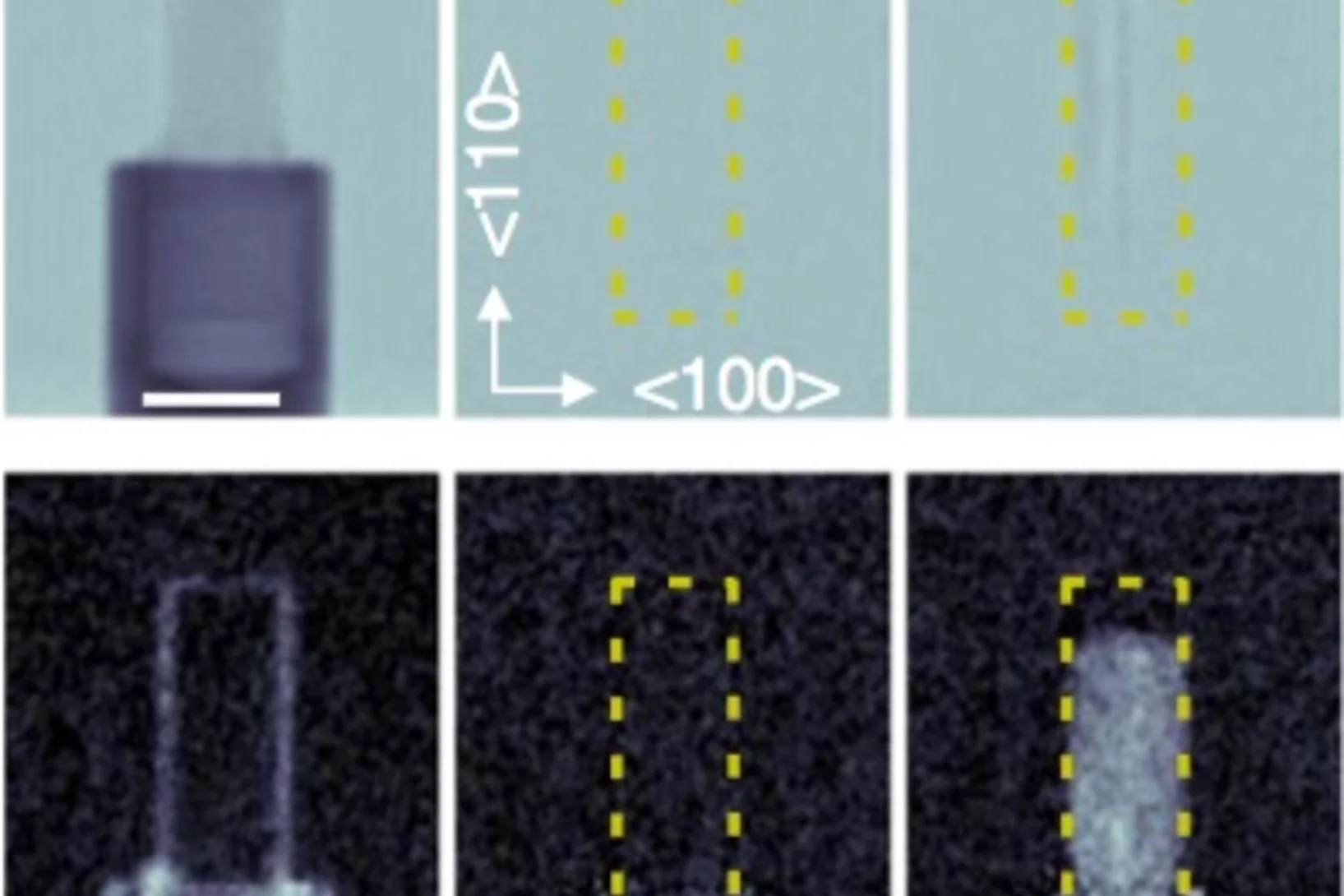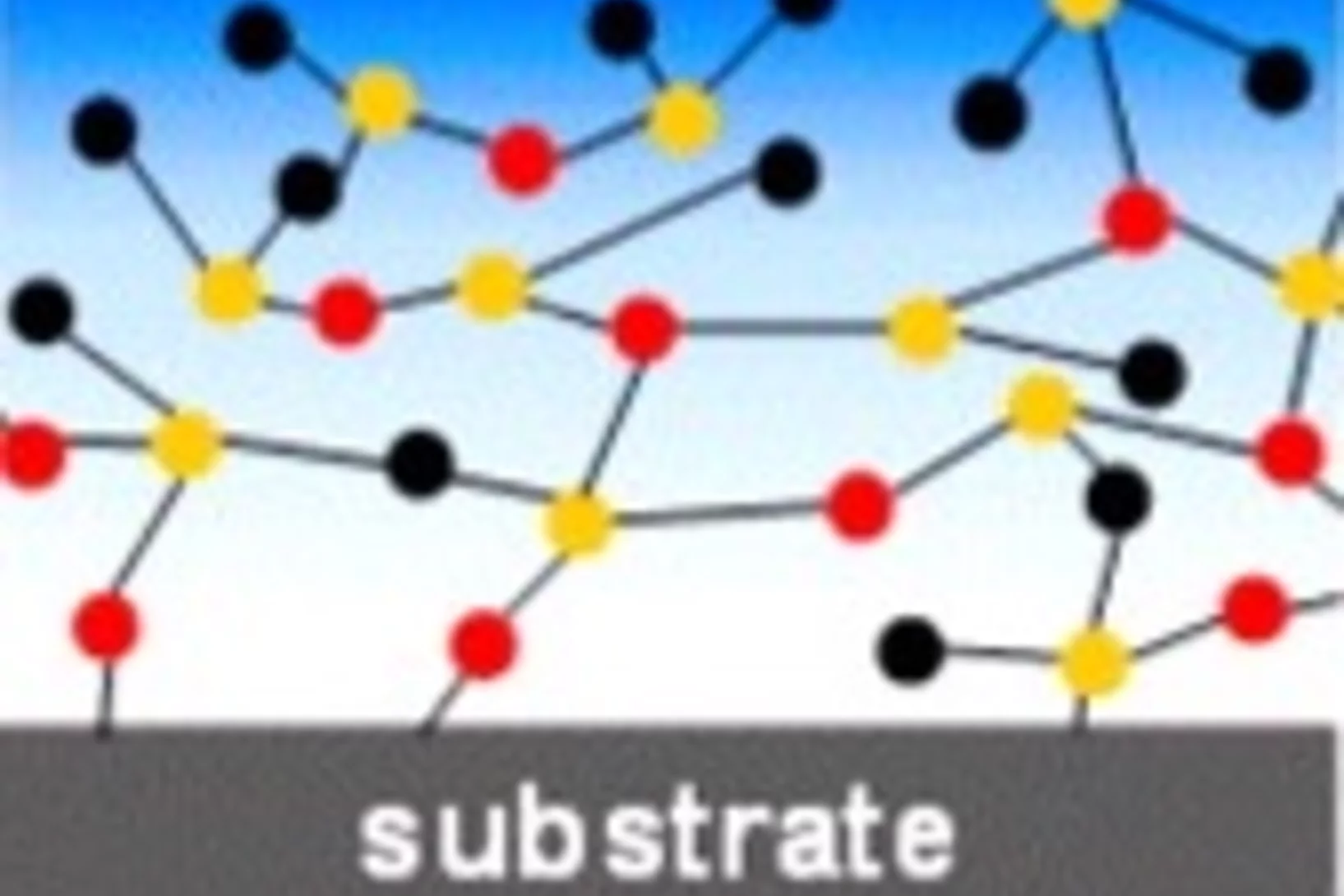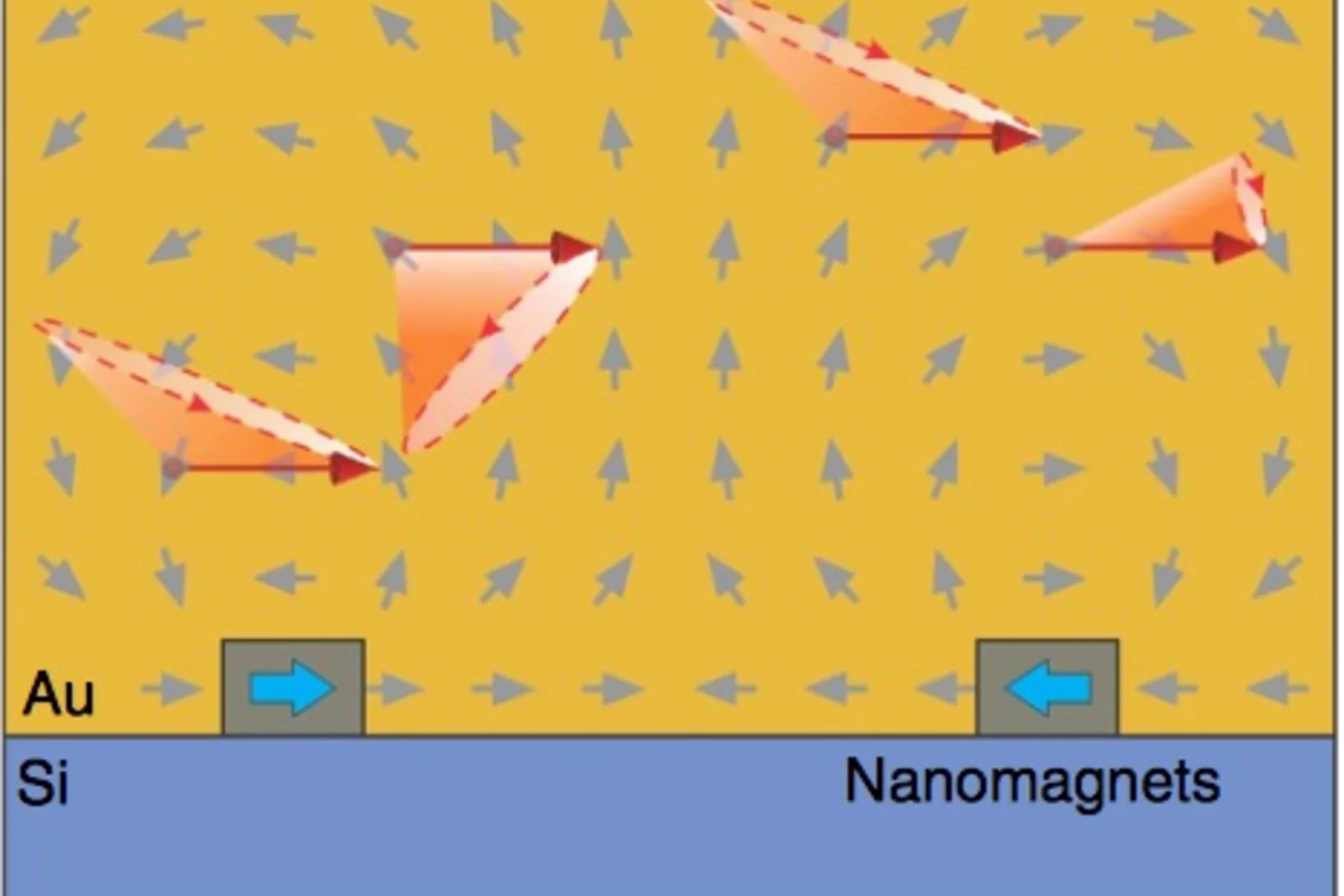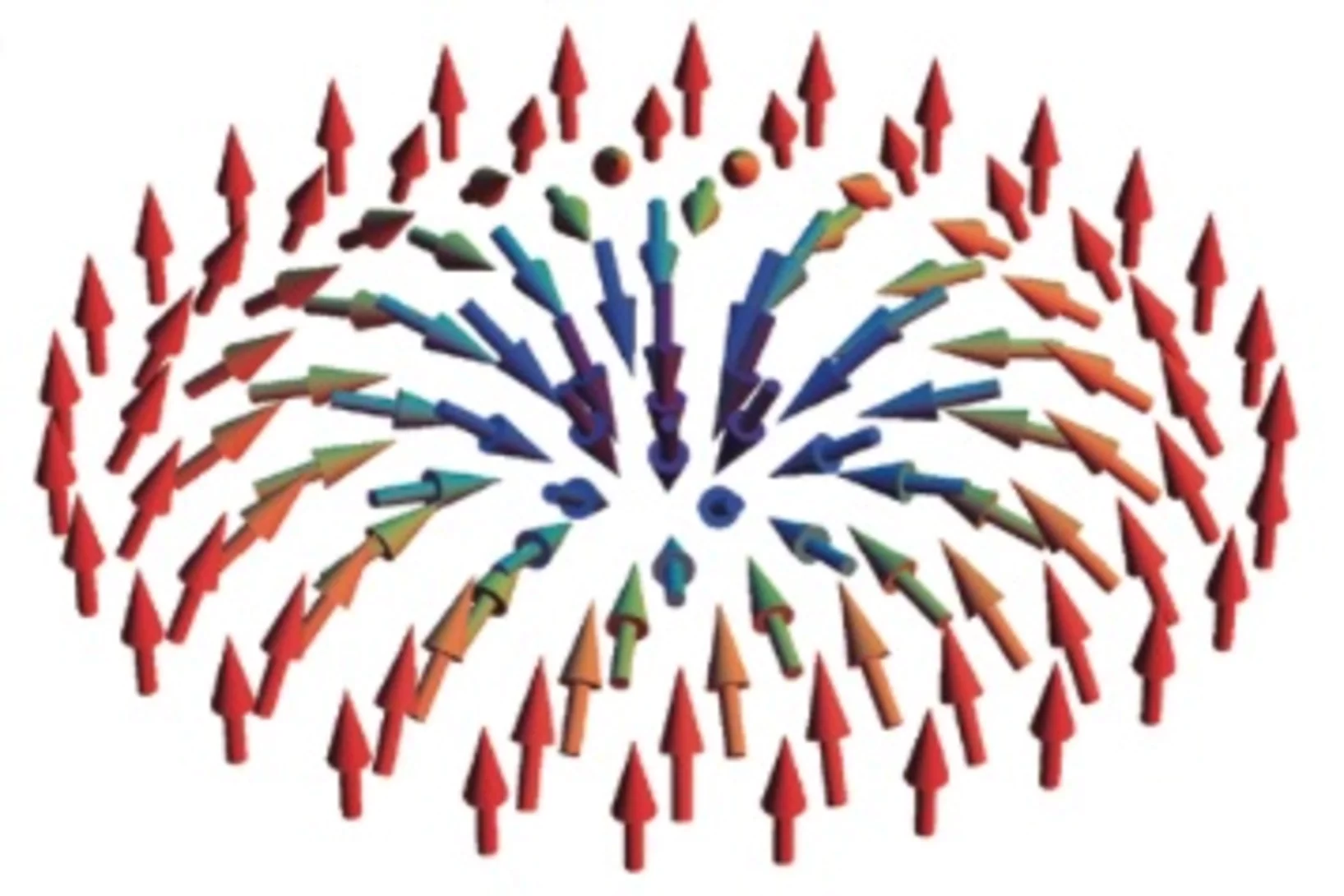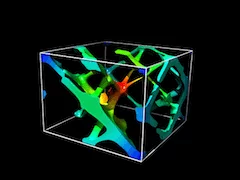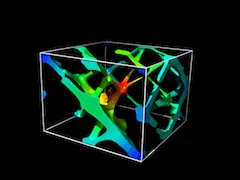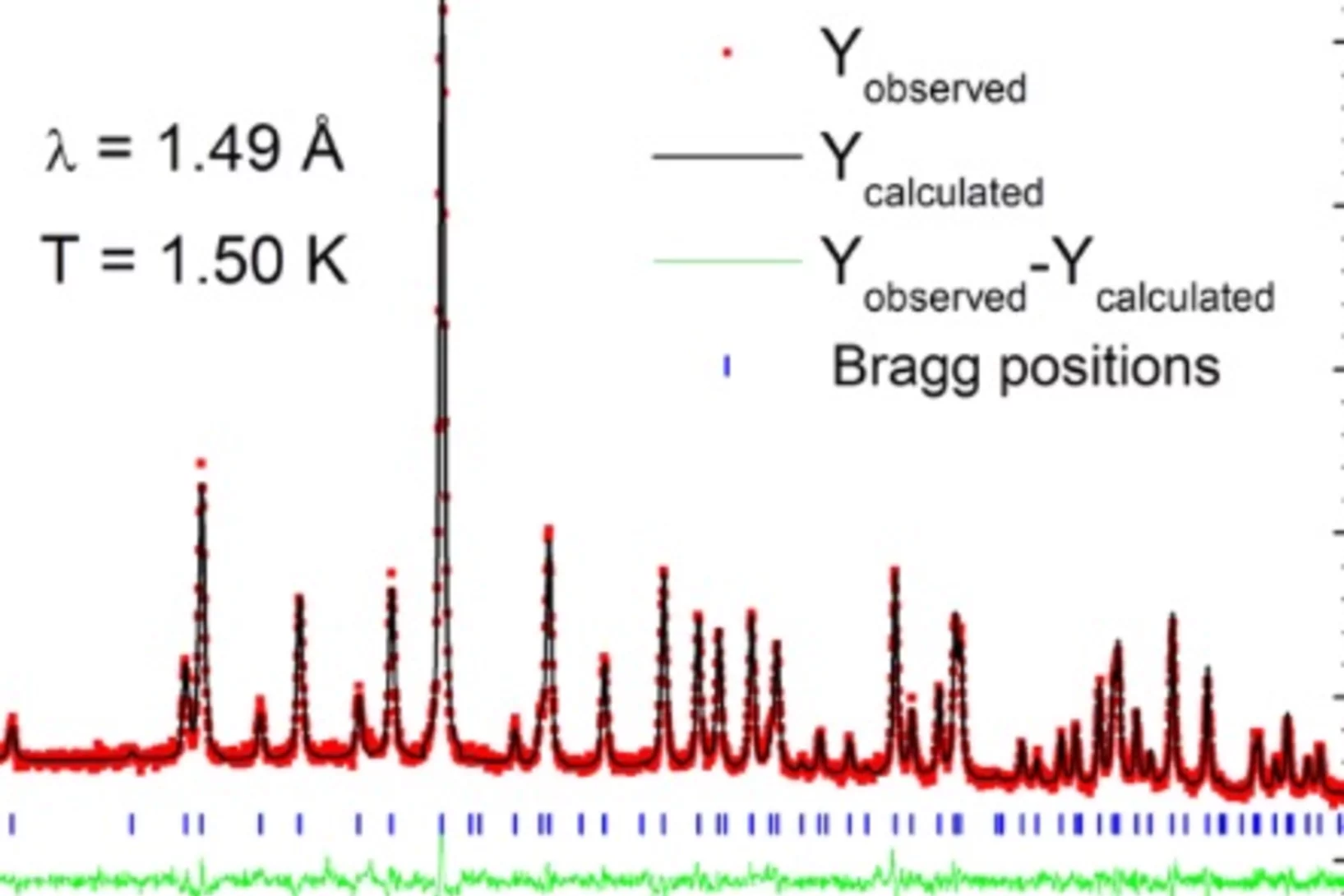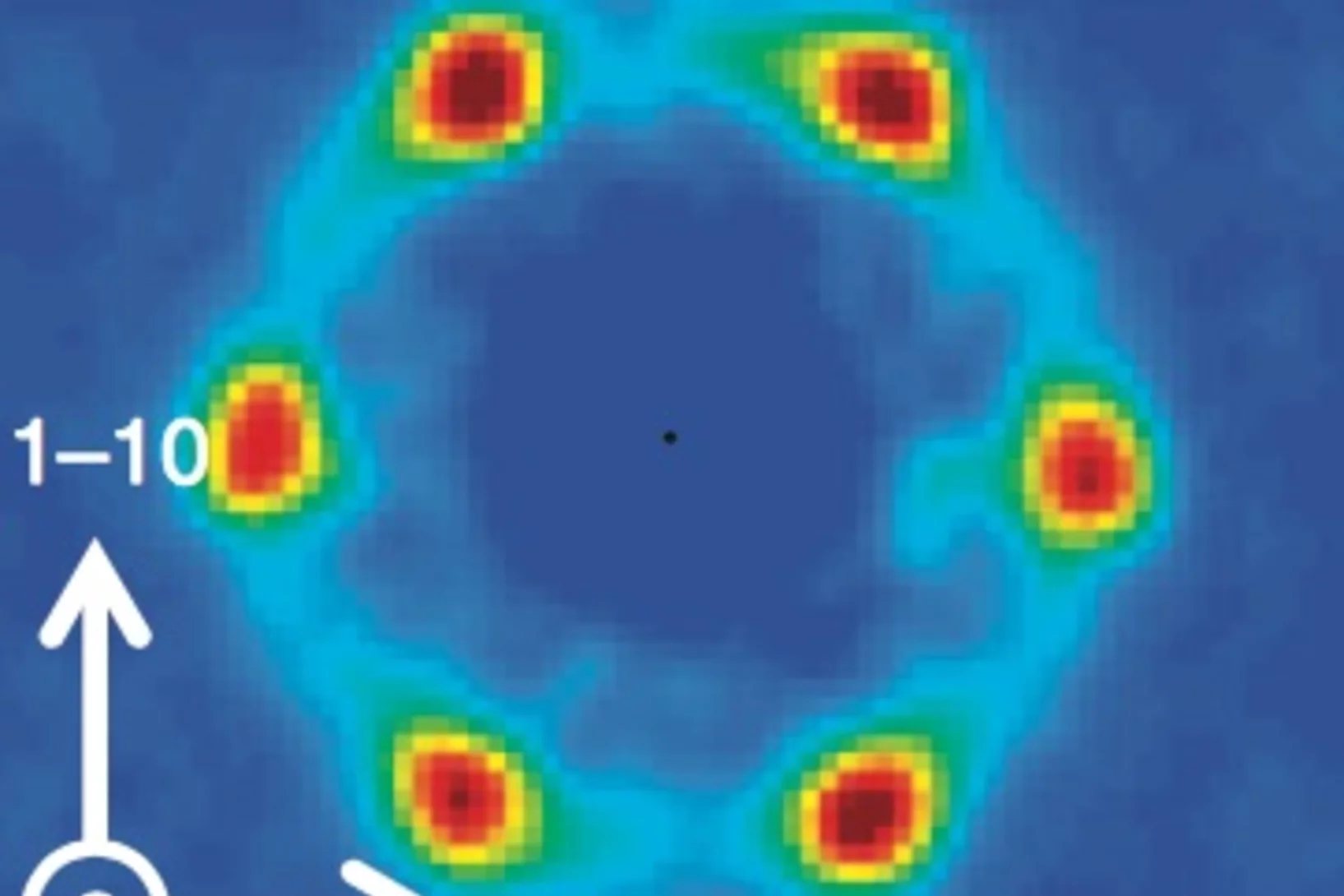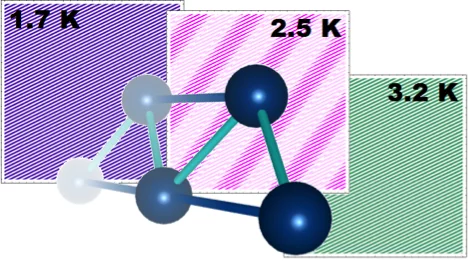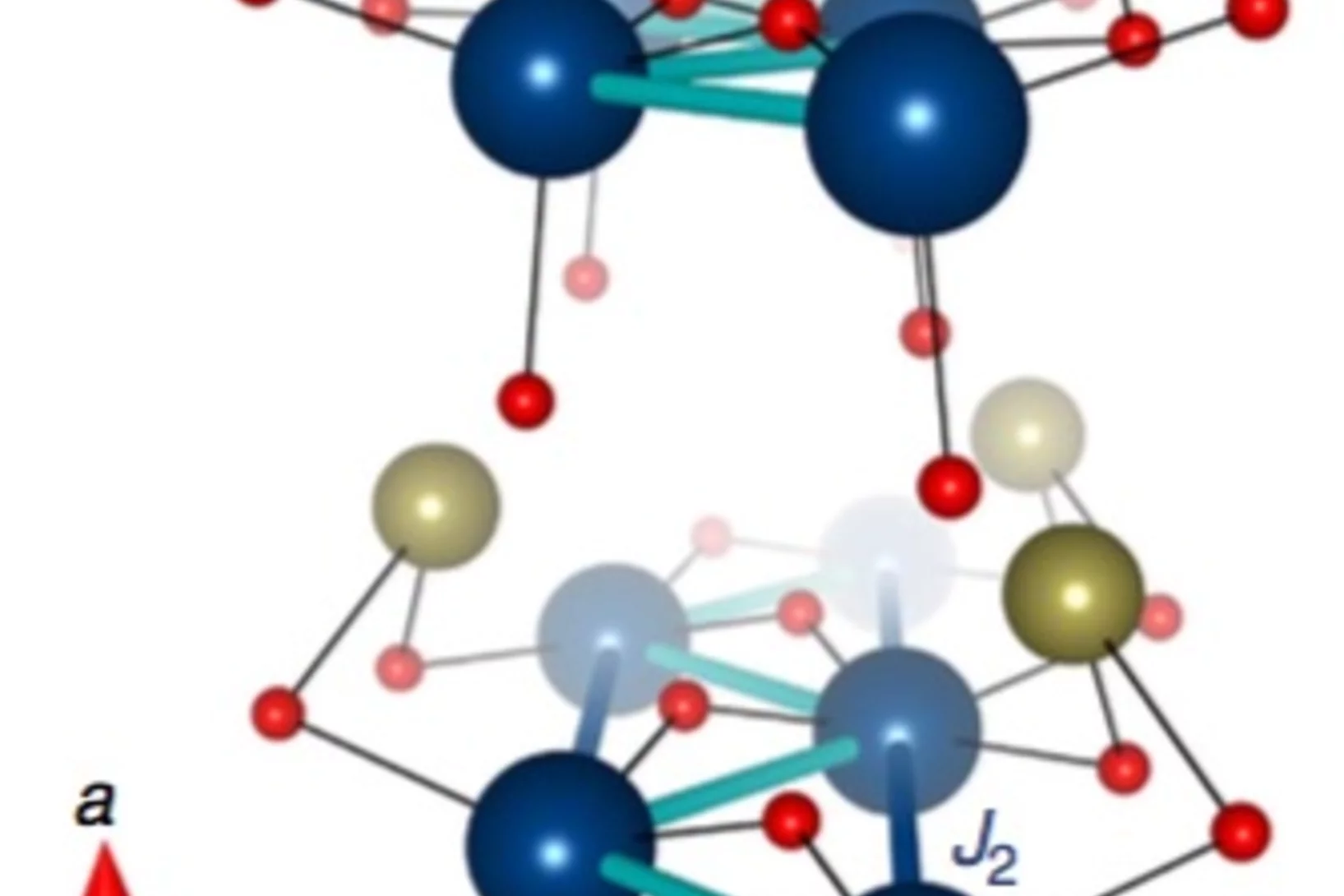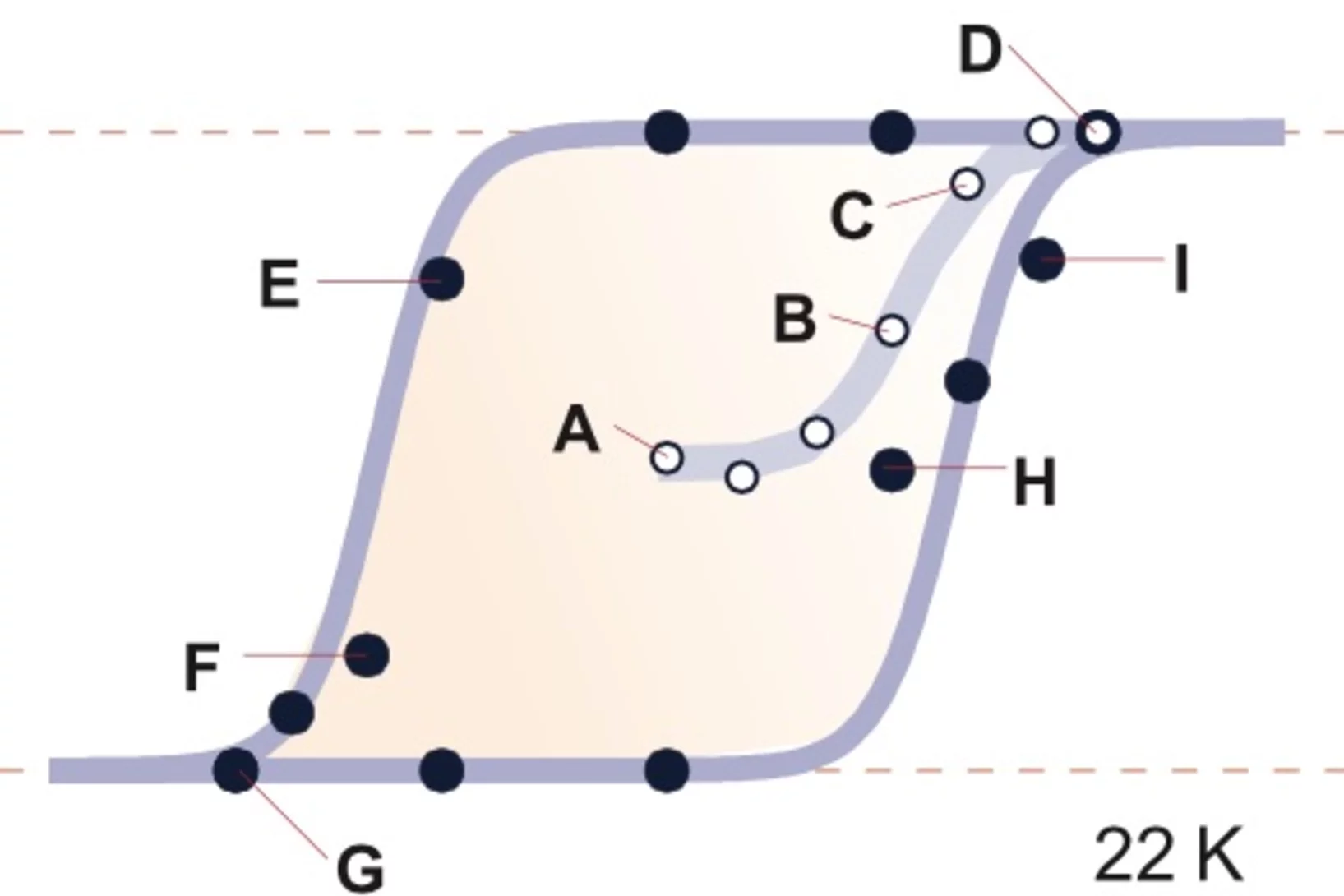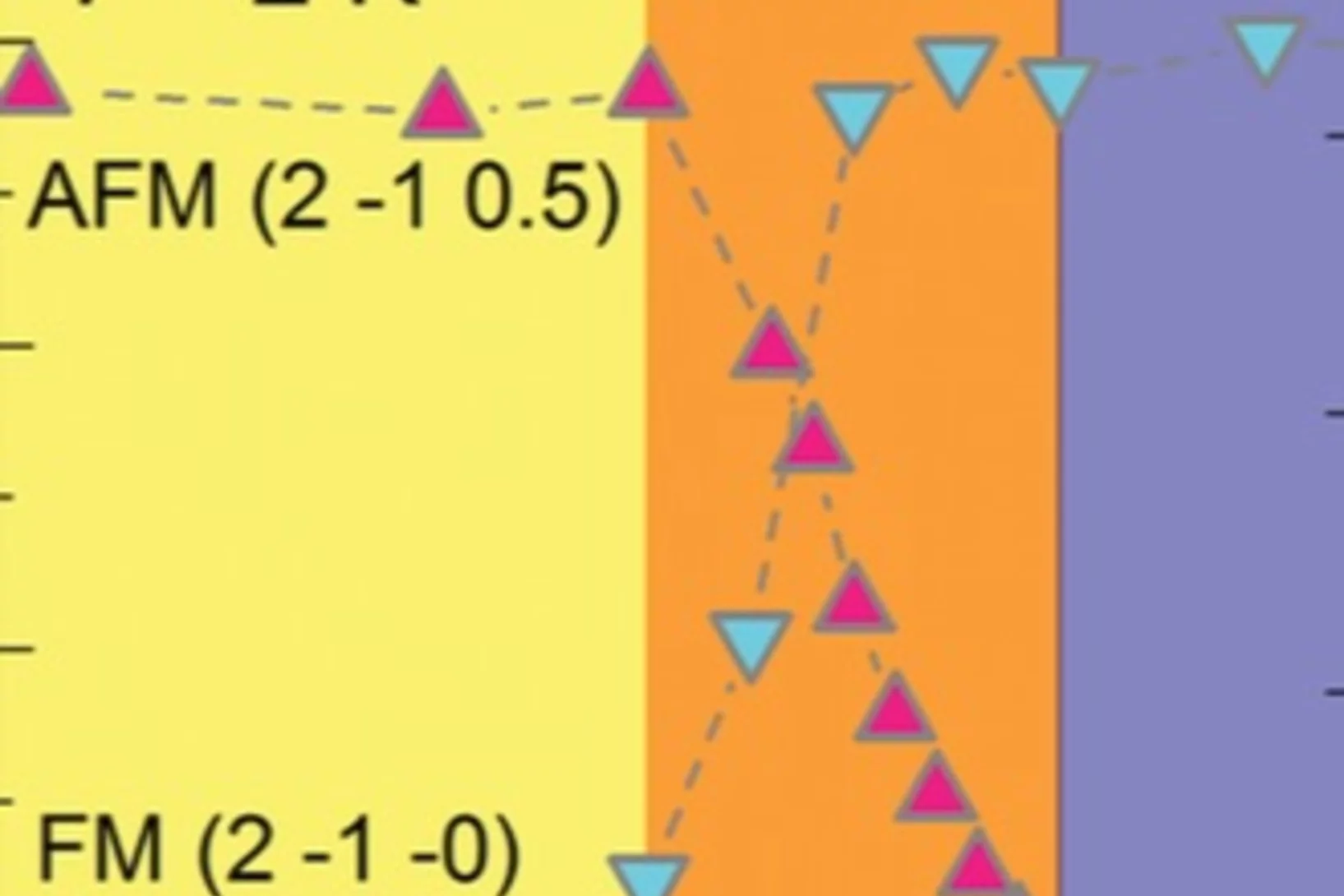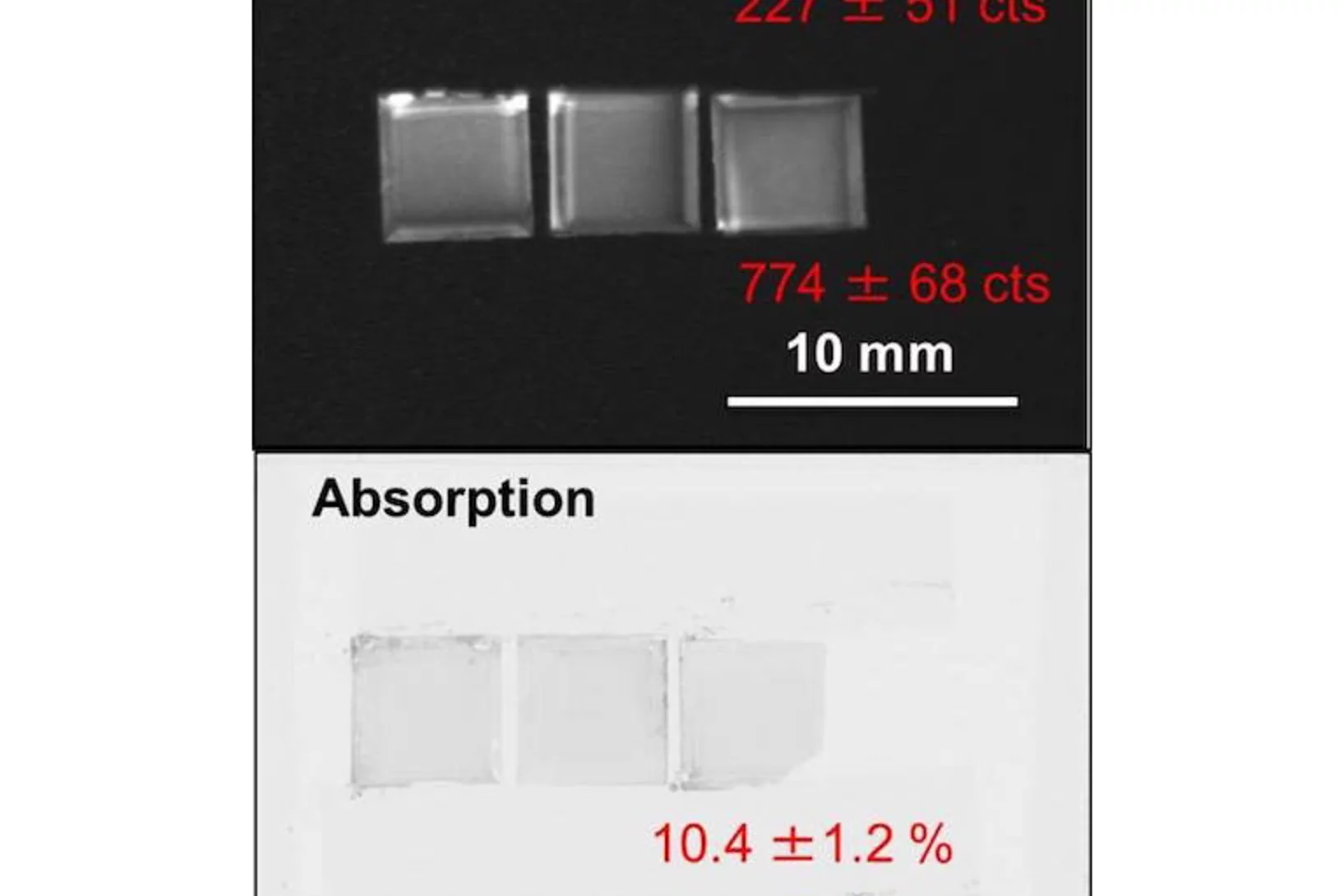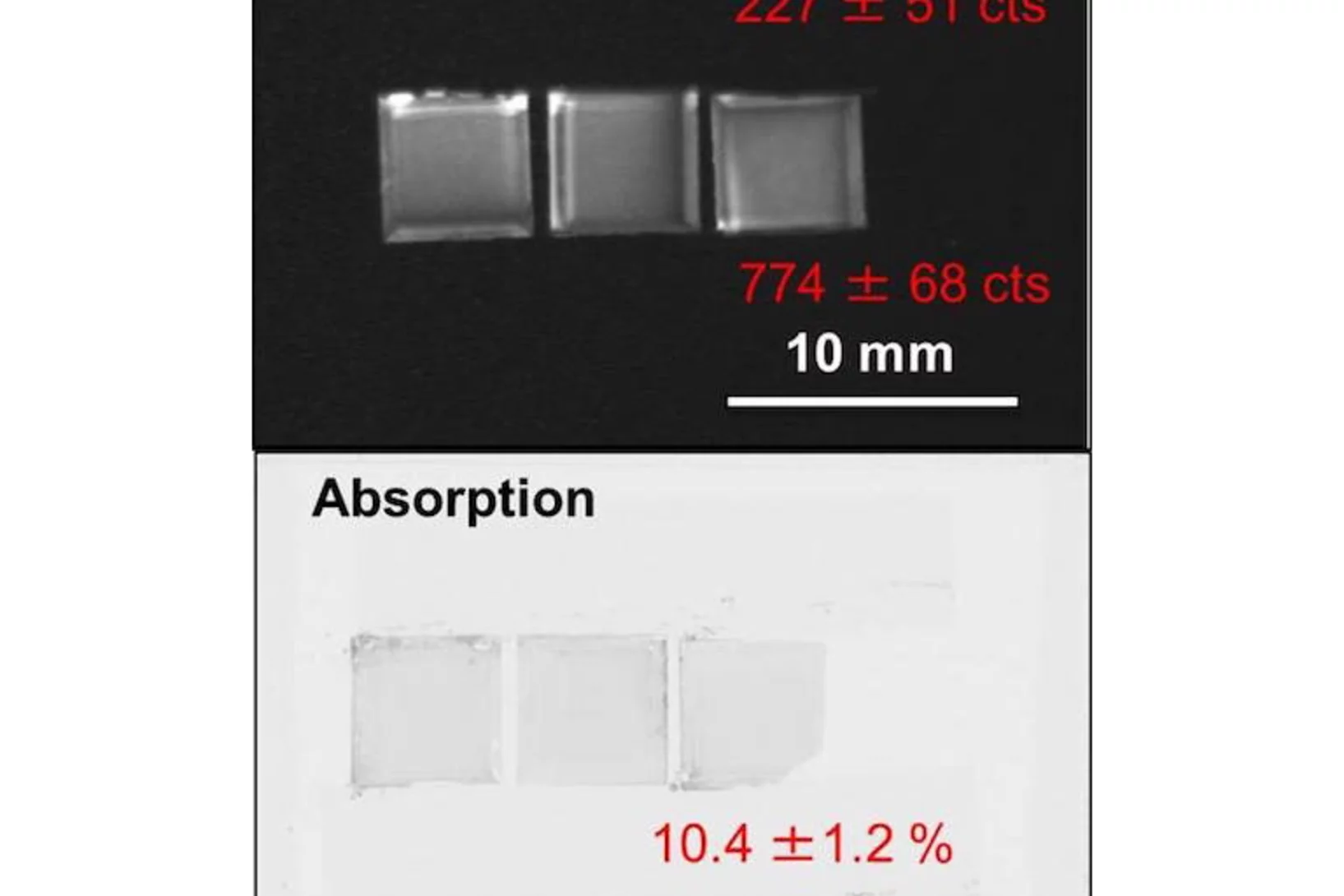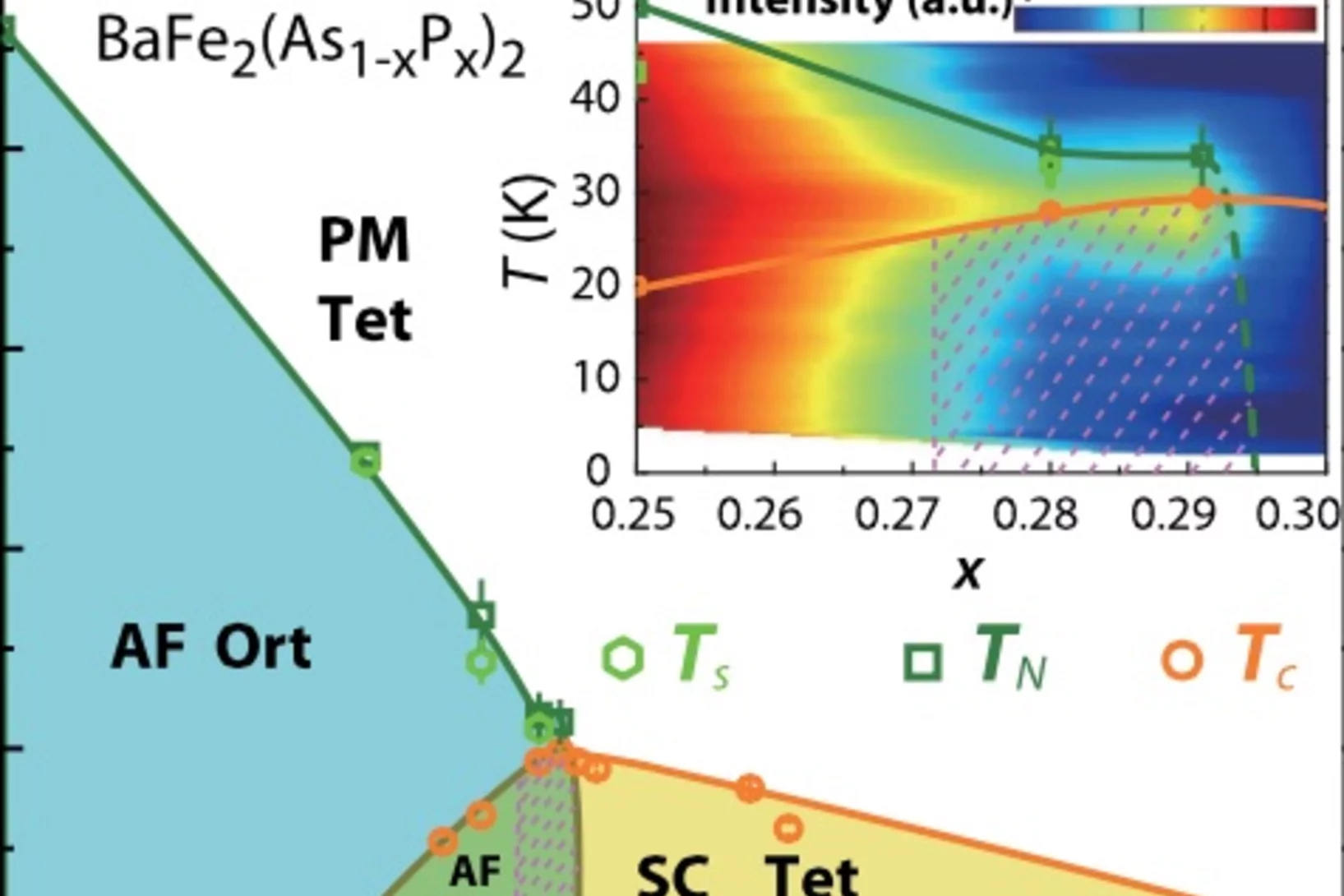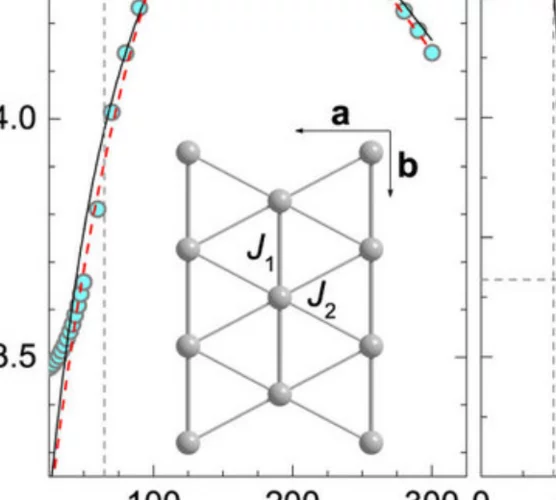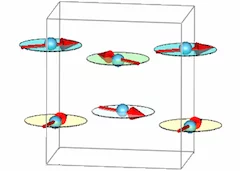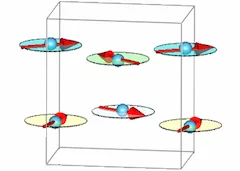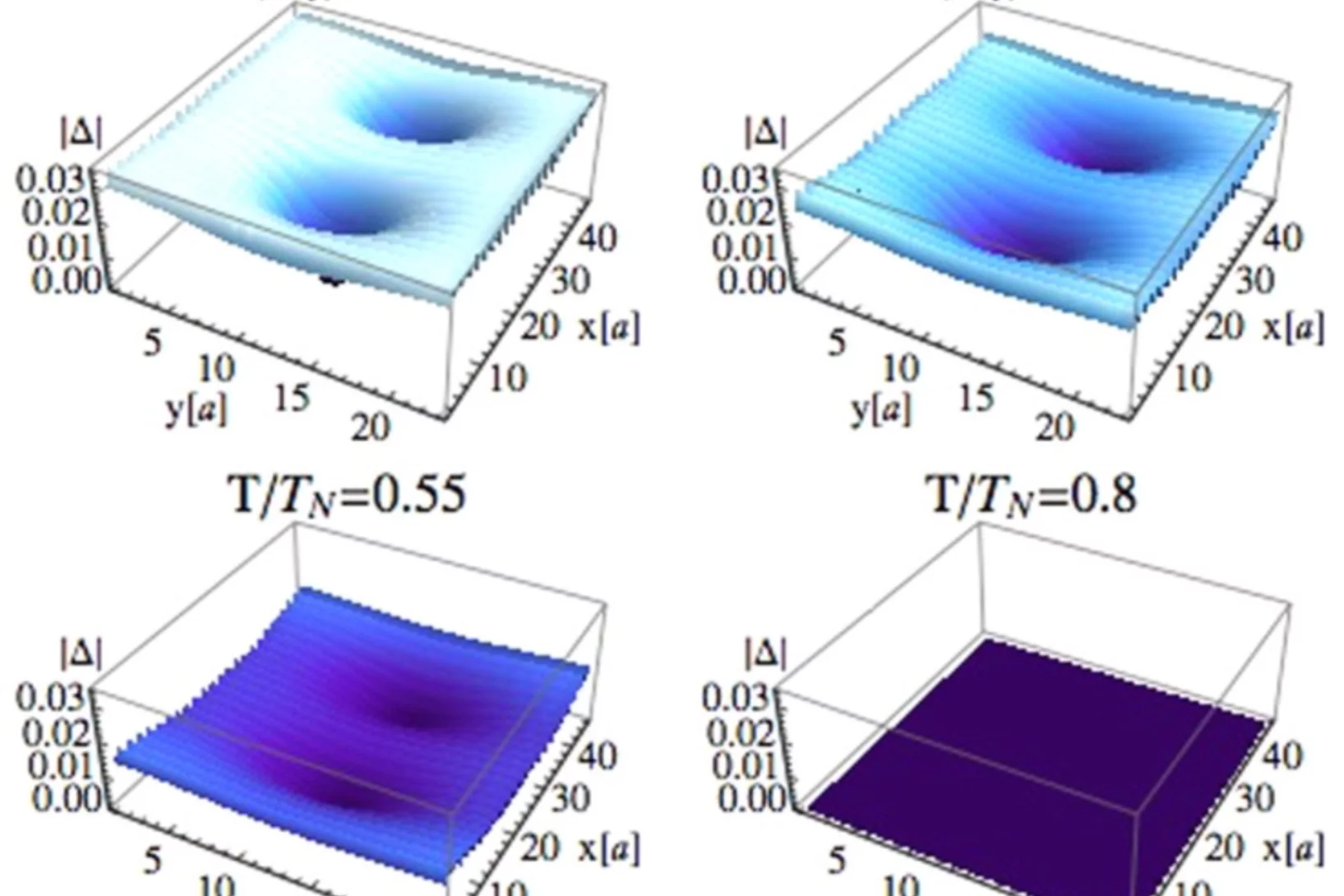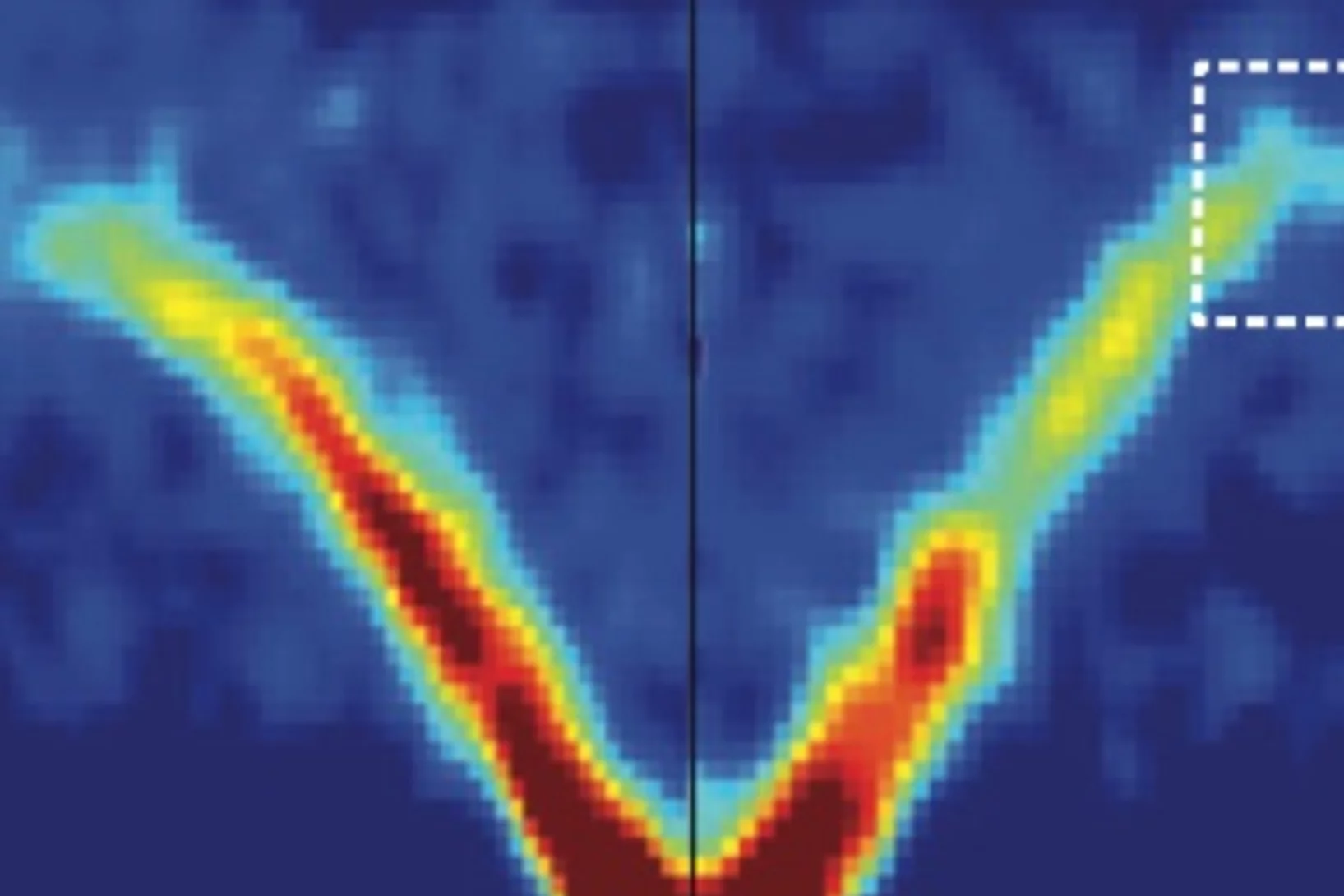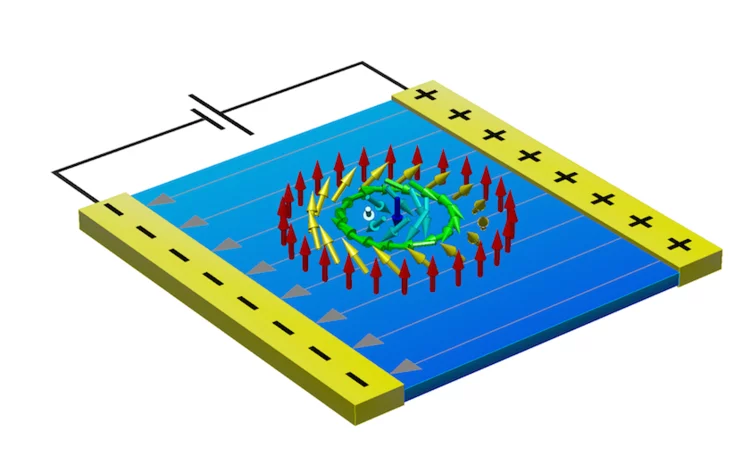Mechanically Enhanced Liquid Interfaces at Human Body Temperature Using Thermosensitive Methylated Nanocrystalline Cellulose
The mechanical performance of materials at oil/water interfaces after consumption is a key factor affecting hydrophobic drug release. In this study, we methylated the surface of nanocrystalline cellulose (NCC) by mercerization and dimethyl sulfate exposure to produce thermosensitive biopolymers. These methylated NCC (metNCC) were used to investigate interfacial thermogelation at air/water and medium-chain triglyceride (MCT)/water interfaces at body temperature.
Self-Diffusion in Amorphous Silicon
The present Letter reports on self-diffusion in amorphous silicon. Experiments were done on 29Si/natSi heterostructures using neutron reflectometry and secondary ion mass spectrometry. The diffusivities follow the Arrhenius law in the temperature range between 550 and 700°C with an activation energy of (4.4 ± 0.3) eV.
In-situ visualization of stress-dependent bulk magnetic domain formation by neutron grating interferometry
The performance and degree of efficiency of industrial transformers are directly influenced by the magnetic properties of high-permeability steel laminations (HPSLs). Industrial transformer cores are built of stacks of single HPSLs. While the insulating coating on each HPSL reduces eddy-current losses in the transformer core, the coating also induces favorable inter-granular tensile stresses that significantly influence the underlying magnetic domain structure.
Nanostructure surveys of macroscopic specimens by small-angle scattering tensor tomography
The mechanical properties of many materials are based on the macroscopic arrangement and orientation of their nanostructure. This nanostructure can be ordered over a range of length scales. In biology, the principle of hierarchical ordering is often used to maximize functionality, such as strength and robustness of the material, while minimizing weight and energy cost.
Visualizing the morphology of vortex lattice domains in a bulk type-II superconductor
Alike materials in the solid state, the phase diagram of type-II superconductors exhibit crystalline, amorphous, liquid and spatially inhomogeneous phases. The multitude of different phases of vortex matter has thence proven to act as almost ideal model system for the study of both the underlying properties of superconductivity but also of general phenomena such as domain nucleation and morphology.
Visualizing the morphology of vortex lattice domains in a bulk type-II superconductor
Alike materials in the solid state, the phase diagram of type-II superconductors exhibit crystalline, amorphous, liquid and spatially inhomogeneous phases. The multitude of different phases of vortex matter has thence proven to act as almost ideal model system for the study of both the underlying properties of superconductivity but also of general phenomena such as domain nucleation and morphology.
Response of Plasma-Polymerized Hexamethyldisiloxane Films to Aqueous Environments
Thin plasma polymer films were deposited in hexamethyldisiloxane (HMDSO) and HMDSO/O2 low-pressure discharges and their chemical structures analyzed using infrared (IR) spectroscopy and neutron reflectometry (NR). The (plasma-polymerized) ppHMDSO film exhibits hydrophobic, poly(dimethylsiloxane)-like properties, while the retention of carbon groups is reduced by O2 addition, yielding a more inorganic, hydrophilic ppSiOx film.
Thermodynamic phase transitions in a frustrated magnetic metamaterial
Materials with interacting magnetic degrees of freedom display a rich variety of magnetic behaviour that can lead to novel collective equilibrium and out-of-equilibrium phenomena. In equilibrium, thermodynamic phases appear with the associated phase transitions providing a characteristic signature of the underlying collective behaviour.
Pressure-induced electronic phase separation of magnetism and superconductivity in CrAs
The recent discovery of pressure (p) induced superconductivity in the binary helimagnet CrAs has raised questions on how superconductivity emerges from the magnetic state and on the mechanism of the superconducting pairing. In the present work the suppression of magnetism and the occurrence of superconductivity in CrAs were studied by means of muon spin rotation.
Néel-type skyrmion lattice with confined orientation in the polar magnetic semiconductor GaV4S8
Following the early prediction of the skyrmion lattice (SkL) - a periodic array of spin vortices - it has been observed recently in various magnetic crystals mostly with chiral structure. Although non-chiral but polar crystals with Cnv symmetry were identified as ideal SkL hosts in pioneering theoretical studies, this archetype of SkL has remained experimentally unexplored.
Lattice dynamics of α-cristobalite and the Boson peak in silica glass
This work marks a decisive step in the solution of the longstanding problem understanding the origin of the Boson peak in silica glass. The investigation by means of diffuse and inelastic x-ray scattering and lattice dynamics calculations from first principles allow for a direct comparison of the atomic motion in crystalline silica polymorphs and silica glass. The article was selected to illustrate the cover page of Journal of Physics: Condensed Matter, Vol. 27, Nr. 30.
Lattice dynamics of α-cristobalite and the Boson peak in silica glass
B. Wehinger et al., J. Phys.: Condens. Matter 27, 305401 (2015). This work marks a decisive step in the solution of the longstanding problem understanding the origin of the Boson peak in silica glass. The investigation by means of diffuse and inelastic x-ray scattering and lattice dynamics calculations from first principles allow for a direct comparison of the atomic motion in crystalline silica polymorphs and silica glass.
Candidate Quantum Spin Liquid in the Ce3+ Pyrochlore Stannate Ce2Sn2O7
We report the low-temperature magnetic properties of Ce2Sn2O7, a rare-earth pyrochlore. Our suscep- tibility and magnetization measurements show that due to the thermal isolation of a Kramers doublet ground state, Ce2Sn2O7 has Ising-like magnetic moments of ∼1.18 μB. The magnetic moments are confined to the local trigonal axes, as in a spin ice, but the exchange interactions are antiferromagnetic.
A new class of chiral materials hosting magnetic skyrmions beyond room temperature
Magnetic skyrmions are tiny, magnetic-spin vortices that can emerge in magnetic materials. Due to their nanometric size, skyrmions could be used to build extremely high density memory spintronics devices. However, stable skyrmions are not easy to find and control, and are usually only observed well below room temperature.
A new class of chiral materials hosting magnetic skyrmions beyond room temperature
Skyrmions, topologically protected vortex-like nanometric spin textures in magnets, have been attracting increasing attention for emergent electromagnetic responses and possible technological applications for spintronics. In particular, metallic magnets with chiral and cubic/tetragonal crystal structure may have high potential to host skyrmions that can be driven by low electrical current excitation.
Spin-stripe phase in a frustrated zigzag spin-1/2 chain
In strongly correlated electron systems periodic modulations on the nano-scale have typically been associated with competition between short- and long-range interactions, for example, between exchange and dipole-dipole interactions in the case of ferromagnetic thin films. Here we show that spin-stripe textures may develop also in antiferromagnets, where long-range dipole-dipole magnetic interactions are absent.
Spin-stripe phase in a frustrated zigzag spin-1/2 chain
Motifs of periodic modulations are encountered in a variety of natural systems, where at least two rival states are present. In strongly correlated electron systems, such behaviour has typically been associated with competition between short- and long-range interactions, for example, between exchange and dipole-dipole interactions in the case of ferromagnetic thin films.
Controllable Broadband Absorption in the Mixed Phase of Metamagnets
Combination of neutron scattering, muon spin relaxation, specific heat, ac and dc magnetization measurements, and electron magnetic resonance, reveals the ability of metamagnetic materials to absorb the electromagnetic radiation in an extremely broad frequency range.
Magnetoelectric domain control in multiferroic TbMnO3
The manipulation of domains by external fields in ferroic materials is of major interest for applications. In multiferroics with strongly coupled magnetic and electric order, however, the magnetoelectric coupling on the level of the domains is largely unexplored. We investigated the field-induced domain dynamics of TbMnO3 in the multiferroic ground state and across a first-order spin-flop transition.
Controllable Broadband Absorption in the Mixed Phase of Metamagnets
Materials with broad absorption bands are highly desirable for electromagnetic filtering and processing applications, especially if the absorption can be externally controlled. Here, a new class of broadband-absorption materials is introduced. Namely, layered metamagnets exhibit an electromagnetic excitation continuum in the magnetic-field-induced mixed ferro- and antiferromagnetic phase.
Isotopically-enriched gadolinium-157 oxysulfide scintillator screens for the high-resolution neutron imaging
High-resolution neutron imaging (Neutron Microscope project) requires highly efficient scintillator screens. Our aim is to achieve sub-5µm spatial resolution. Here, we demonstrate the feasibility of the production of isotopically-enriched gadolinium oxysulfide scintillator screens for the high spatial-resolution neutron imaging. Approximately 10 g of 157Gd2O2S:Tb was produced in the form of fine powder (the level of 157Gd enrichment above 88%).
Isotopically-enriched gadolinium-157 oxysulfide scintillator screens for the high-resolution neutron imaging
High-resolution neutron imaging (Neutron Microscope project) requires highly efficient scintillator screens. Our aim is to achieve sub-5µm spatial resolution. Here, we demonstrate the feasibility of the production of isotopically-enriched gadolinium oxysulfide scintillator screens for the high spatial-resolution neutron imaging. Approximately 10 g of 157Gd2O2S:Tb was produced in the form of fine powder (the level of 157Gd enrichment above 88%).
Structural and Magnetic Phase Transitions near Optimal Superconductivity in BaFe2(As1-xPx)2
We use nuclear magnetic resonance (NMR), high-resolution x-ray, and neutron scattering studies to study structural and magnetic phase transitions in phosphorus-doped BaFe2(As1-xPx)2. Previous transport, NMR, specific heat, and magnetic penetration depth measurements have provided compelling evidence for the presence of a quantum critical point (QCP) near optimal superconductivity at x=0.3.
Mass Density and Water Content of Saturated Never-Dried Calcium Silicate Hydrates
Calcium silicate hydrates (C-S-H) are the most abundant hydration products in ordinary Portland cement paste. Yet, despite the critical role they play in determining mechanical and transport properties, there is still a debate about their density and exact composition. Here, the site-specific mass density and composition of C-S-H in hydrated cement paste are determined with nanoscale resolution in a nondestructive approach.
Magnetic inhomogeneity on a triangular lattice: the magnetic-exchange versus the elastic energy and the role of disorder
Inhomogeneity in the ground state is an intriguing, emergent phenomenon in magnetism. Recently, it has been observed in the magnetostructural channel of the geometrically frustrated α-NaMnO2, for the first time in the absence of active charge degrees of freedom. Here we report an in-depth numerical and local-probe experimental study of the isostructural sister compound CuMnO2 that emphasizes and provides an explanation for the crucial differences between the two systems.
Pressure dependence of the magnetic order in CrAs
L. Keller et al., Phys. Rev. B 91, 020409(R) (2015). The suppression of magnetic order with pressure concomitant with the appearance of pressure-induced superconductivity was recently discovered in CrAs. Here we present a neutron diffraction study of the pressure evolution of the helimagnetic ground state towards and in the vicinity of the superconducting phase. Neutron diffraction on polycrystalline CrAs was employed from zero pressure to 0.65 GPa and at various temperatures.
Pressure dependence of the magnetic order in CrAs
The suppression of magnetic order with pressure concomitant with the appearance of pressure-induced superconductivity was recently discovered in CrAs. Here we present a neutron diffraction study of the pressure evolution of the helimagnetic ground state towards and in the vicinity of the superconducting phase. Neutron diffraction on polycrystalline CrAs was employed from zero pressure to 0.65 GPa and at various temperatures.
Competing superconducting and magnetic order parameters and field-induced magnetism in electron-doped Ba(Fe1-xCox)2As2
We have studied the magnetic and superconducting properties of Ba(Fe0.95Co0.05)2As2 as a function of temperature and external magnetic field using neutron scattering and muon spin rotation. Below the superconducting transition temperature the magnetic and superconducting order parameters coexist and compete. A magnetic field can significantly enhance the magnetic scattering in the superconducting state, roughly doubling the Bragg intensity at 13.5T.
Fractional excitations in the square-lattice quantum antiferromagnet
Quantum magnets have occupied the fertile ground between many-body theory and low-temperature experiments on real materials since the early days of quantum mechanics. However, our understanding of even deceptively simple systems of interacting spin-1/2 particles is far from complete. The quantum square-lattice Heisenberg antiferromagnet, for example, exhibits a striking anomaly of hitherto unknown origin in its magnetic excitation spectrum.
Electric-Field-Induced Skyrmion Distortion and Giant Lattice Rotation in the Magnetoelectric Insulator Cu2OSeO3
Discovering fundamentally new ways to manipulate magnetic spins is crucial for research into advanced technologies. Magnetic Skyrmions, which are topologically stable whirls of magnetic spins, are promising candidates for new device components since those found in metallic host materials can be manipulated using electric currents.


